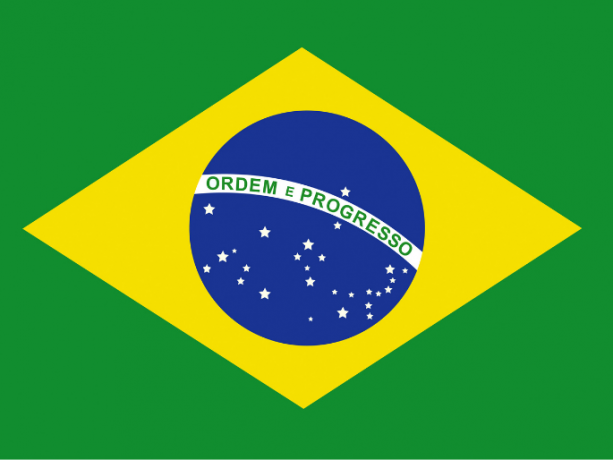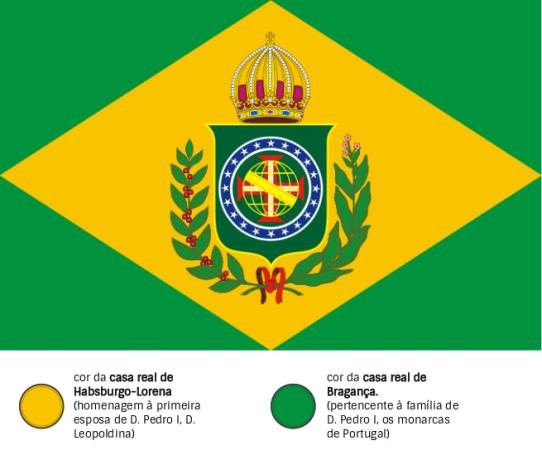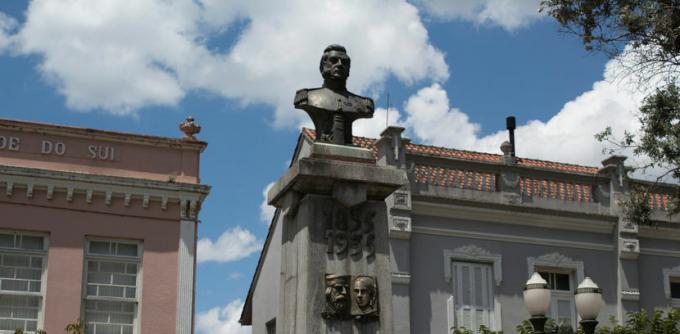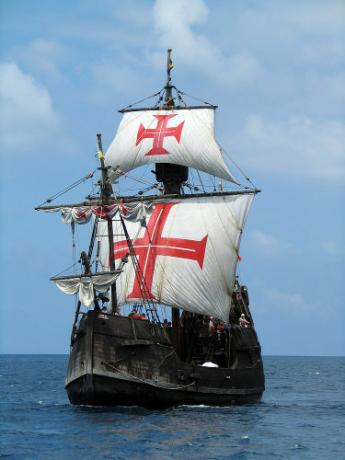The Flag of Brazil is the maximum symbol of representation of the Brazilian nation vis-à-vis other countries.
The Brazilian flag consists of a green rectangle, a yellow diamond in the center, a sky blue sphere inside the diamond, and a white band with the phrase "Ordem e Progresso". The Brazilian flag also features 27 stars representing the country's 26 states and the Federal District.

The current version of the Brazilian flag was presented in November 19, 1889, through Decree No. 4, four days after the proclamation of the Republic in Brazil, replacing the former imperial flag of the country. The design of the flag was by Décio Vilares, inspired by the Empire's flag.
Meaning of the colors of the Brazilian flag

At official colors of the Brazilian flag are green, yellow, blue and white, with the phrase "Ordem e Progresso".
Originally, they symbolized the colors of the royal houses of D's family. Pedro I, green being the symbol color of the Bragança royal house and yellow of the Habsburg royal house. However, over the years Brazilians have associated other meanings for each of the colors, even if these are not considered official:
- "white" means the desire for peace
- "blue" symbolizes the Brazilian sky and rivers
- "yellow" symbolizes the country's riches
- "green", symbolizes the forests (the rich Brazilian forest)
The phrase "Order and Progress" was based on the studies of the French philosopher, founder of positivism, Augusto Comte.
Meaning of the colors of the flag of the Empire of Brazil

Initially, shortly after Brazil's independence as a colony of Portugal, D. Pedro I was consecrated the Emperor of Brazil. Thus, a flag and coat of arms were created to represent the Brazilian empire, which is the inspiring basis for the current national flag.
The green rectangle was associated with the Bragança house, of which the family of D. Peter I; the yellow already referred to Habsburg-Lorraine house, belonging to D. Leopoldine, the Emperor's first wife.
However, with the end of the imperial period and the establishment of the republic, new interpretations were made for the current colors of the Brazilian flag, as mentioned above.
Meaning of the stars of the Brazilian flag

On May 11, 1992, the Brazilian flag had 27 stars (current format), including the states of Amapá, Tocantins, Roraima and Rondônia.
Before 1992, the Brazilian flag had 23 stars, representing the 23 Brazilian states at the time. According to Decree of Law No. 5.443, in May 28, 1968, whenever a new state is created in Brazil, a new star must be inserted in the Brazilian flag.
The first version of the Brazilian flag had 21 stars, representing the states of: Amazonas, Pará, Maranhão, Piauí, Ceará, Rio Grande do Norte, Paraíba do Norte (currently Paraíba), Pernambuco, Alagoas, Sergipe, Bahia, Espírito Santo, Minas Gerais, Rio de Janeiro, São Paulo, Paraná, Santa Catarina, Rio Grande do Sul, Goiás, Mato Grosso, Municipality of Cut.
The stars of the Brazilian flag represent the Brazilian states and the Federal District. The arrangement and size of each star was established from the view of the sky over the city of Rio de Janeiro on the night of November 19, 1889.
The only star above the white band of "Ordem e Progresso" is known as "Spica" and represents the state of For, which at the time was the largest territory close to the equatorial axis.
See also what the meaning of Independence of Brazil.
flag day
Flag Day is celebrated every year in November 19th. That was the date, in 1889, when the national republican flag was instituted as the official flag of Brazil.
Even though it is considered an extremely important date for the country, it's not a national holiday in Brazil.
See also the meaning of Order and Progress and see the meaning of the Brazilian Flag Day.
Brazilian Flag Laws
In Brazil there are some rules and laws regarding the use of the national flag:
In all public bodies, the flag must be hoisted every day in the morning and collected in the late afternoon;
The flag should not be hoisted at night unless it is well lit;
The Brazilian flag must not be disrespected, as guaranteed by article 31 of Law No. 5.700, of September 1, 1971:
"Manifestations of disrespect for the National Flag are considered, and therefore prohibited:
I - Present it in poor condition.
II - Change its shape, colors, proportions, the label or add other inscriptions.
III - Use it as clothing, curtains, curtains, table decorations, tribune coverings, or as a covering for plates, portraits, panels or monuments to be inaugurated.
IV - Reproduce it on labels or product wrappings displayed for sale".
Discover the meaning of country flags and Flag of Portugal.


